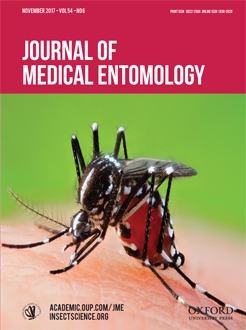Aedes aegypti (L.) and Ae. albopictus (Skuse) are important arbovirus vectors in the United States, and the recent emergence of Zika virus disease as a public health concern in the Americas has reinforced a need for tools to rapidly distinguish between these species in collections made by vector control agencies. We developed a duplex real-time PCR assay that detects both species and does not cross-amplify in any of the other seven Aedes species tested. The lower limit of detection for our assay is equivalent to ~0.03 of a first-instar larva in a 60-μl sample (0.016 ng of DNA per real-time PCR reaction). The assay was sensitive and specific in mixtures of both species that reflected up to a 2,000-fold difference in DNA concentration. In addition, we developed a simple protocol to extract DNA from sonicated first-instar larvae, and used that DNA to test the assay. Because it uses real-time PCR, the assay saves time by not requiring a separate visualization step. This assay can reduce the time needed for vector control agencies to make species identifications, and thus inform decisions about surveillance and control.
How to translate text using browser tools
25 July 2017
Duplex Real-Time PCR Assay Distinguishes Aedes aegypti From Ae. albopictus (Diptera: Culicidae) Using DNA From Sonicated First-Instar Larvae
Linda Kothera,
Brian Byrd,
Harry M. Savage
ACCESS THE FULL ARTICLE
It is not available for individual sale.
This article is only available to subscribers.
It is not available for individual sale.
It is not available for individual sale.

Journal of Medical Entomology
Vol. 54 • No. 6
November 2017
Vol. 54 • No. 6
November 2017
Aedes aegypti
Aedes albopictus
real-time PCR
species identification assay
Zika




